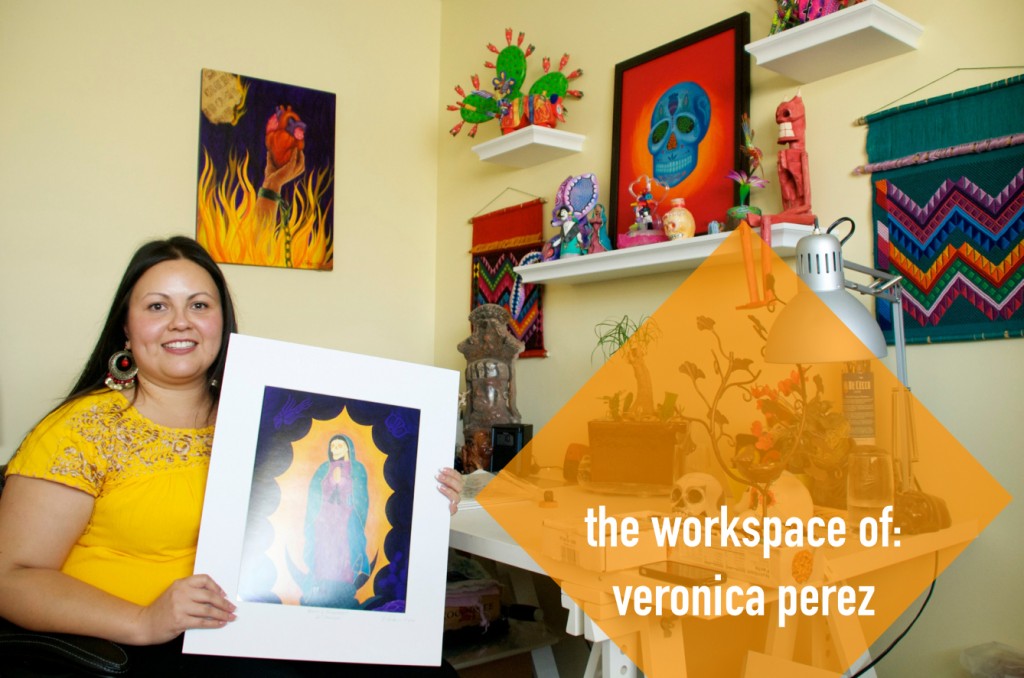 Veronica Perez is an artist deeply inspired by her family, her cultural traditions, and the political struggles of her people. Her paintings share the stories and symbols of an indigenous heritage, her way of remembering her roots and keeping those voices alive. She believes we can learn from the past and that art can be both educational and empowering. It was art that helped her adjust to the culture shock of moving as a child from California to Salt Lake City. The common creative thread for Veronica was and still is vibrant color. Coloring books were available to her, but Veronica much preferred a wide open page, a blank space where she was free to create absolutely anything. Veronica’s mother kept her engrossed in mediums from crochet to sketching, painting to sewing. Her fondest creative memory is of sewing cloth dolls with her mom. Though she wasn’t fully aware of the effect at the time, the cows and rabbits she sewed proved to be a pivotal moment. As she recalls, “It marks the moment I discovered that I could create with any material I wanted, not just paper and pencil.” While she is most known for her fine art paintings, she rejects what she considers to be arbitrary restrictions in the art world. Veronica considers herself an artist in many different mediums.
Veronica Perez is an artist deeply inspired by her family, her cultural traditions, and the political struggles of her people. Her paintings share the stories and symbols of an indigenous heritage, her way of remembering her roots and keeping those voices alive. She believes we can learn from the past and that art can be both educational and empowering. It was art that helped her adjust to the culture shock of moving as a child from California to Salt Lake City. The common creative thread for Veronica was and still is vibrant color. Coloring books were available to her, but Veronica much preferred a wide open page, a blank space where she was free to create absolutely anything. Veronica’s mother kept her engrossed in mediums from crochet to sketching, painting to sewing. Her fondest creative memory is of sewing cloth dolls with her mom. Though she wasn’t fully aware of the effect at the time, the cows and rabbits she sewed proved to be a pivotal moment. As she recalls, “It marks the moment I discovered that I could create with any material I wanted, not just paper and pencil.” While she is most known for her fine art paintings, she rejects what she considers to be arbitrary restrictions in the art world. Veronica considers herself an artist in many different mediums.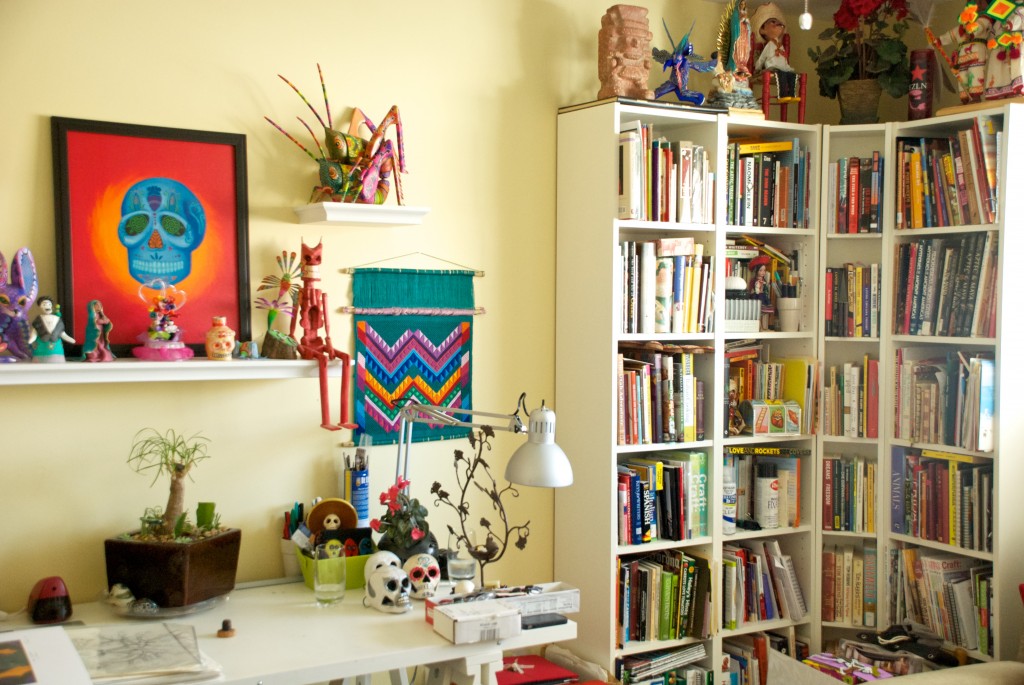

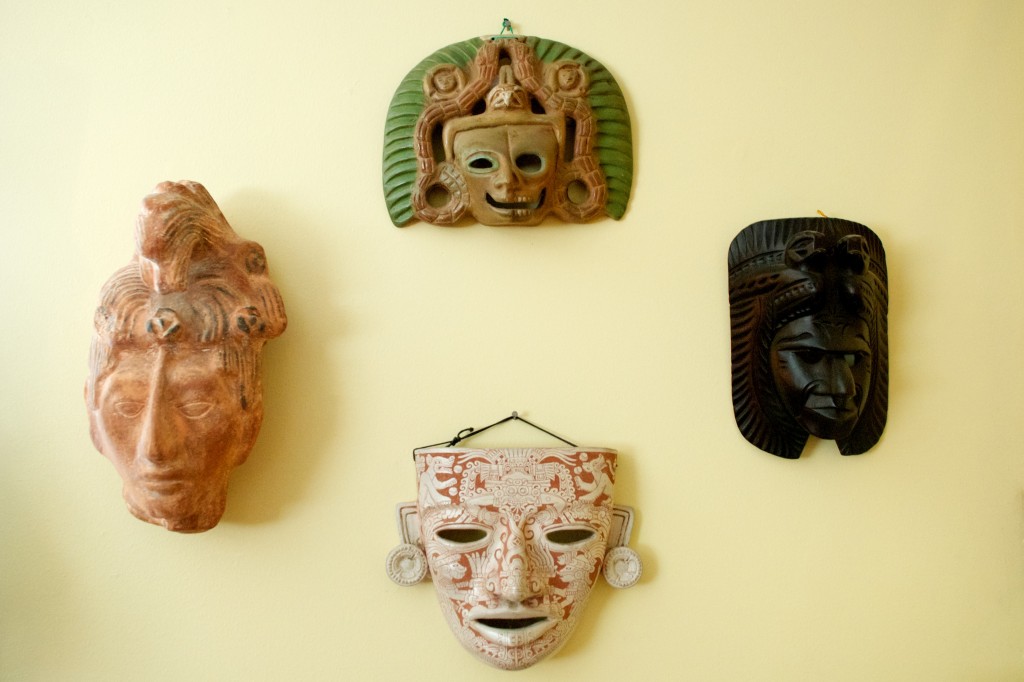

 Veronica’s most recognizable paintings center around Dia de los Muertos, or Day of the Dead. This cultural celebration, deeply rooted in an indigenous past, is the “most symbolic of all because it lays out the complexities of a culture that is often oversimplified and overlooked in our education system and in our media,” she explains. From her perspective as a Mexican, Veronica reflects that it’s an even more complex “syncretization of indigenous and Spanish/Catholic cultures and traditions.” Yet she observes that in the United States in recent years, Dia de los Muertos has become trendy and little more than an excuse to paint iconic sugar skulls. She wishes more people understood this deeply reflective, sacred time. It is meant to remind us of our role on earth and teach us about the cycle of life and death. It is a time to make offerings to our ancestors, to listen to them, and to learn what they are trying to teach us. She says, “If you don’t know what came before you, if you don’t understand the past, you’ll feel incomplete.” The inherent obligation is to either decide to continue the legacy of your ancestors, or to create our own path. Death is not something to be feared in this tradition; death is a teacher. Art is also a teacher. As Veronica declares, “I try to use my art as a form of communication and as an opportunity to dialogue and share. The hidden symbols and icons open up the door to share the stories and traditions of a rich culture.” Beyond the paintings she shares with the world is the altar she creates in her own home throughout the months of October and November.
Veronica’s most recognizable paintings center around Dia de los Muertos, or Day of the Dead. This cultural celebration, deeply rooted in an indigenous past, is the “most symbolic of all because it lays out the complexities of a culture that is often oversimplified and overlooked in our education system and in our media,” she explains. From her perspective as a Mexican, Veronica reflects that it’s an even more complex “syncretization of indigenous and Spanish/Catholic cultures and traditions.” Yet she observes that in the United States in recent years, Dia de los Muertos has become trendy and little more than an excuse to paint iconic sugar skulls. She wishes more people understood this deeply reflective, sacred time. It is meant to remind us of our role on earth and teach us about the cycle of life and death. It is a time to make offerings to our ancestors, to listen to them, and to learn what they are trying to teach us. She says, “If you don’t know what came before you, if you don’t understand the past, you’ll feel incomplete.” The inherent obligation is to either decide to continue the legacy of your ancestors, or to create our own path. Death is not something to be feared in this tradition; death is a teacher. Art is also a teacher. As Veronica declares, “I try to use my art as a form of communication and as an opportunity to dialogue and share. The hidden symbols and icons open up the door to share the stories and traditions of a rich culture.” Beyond the paintings she shares with the world is the altar she creates in her own home throughout the months of October and November.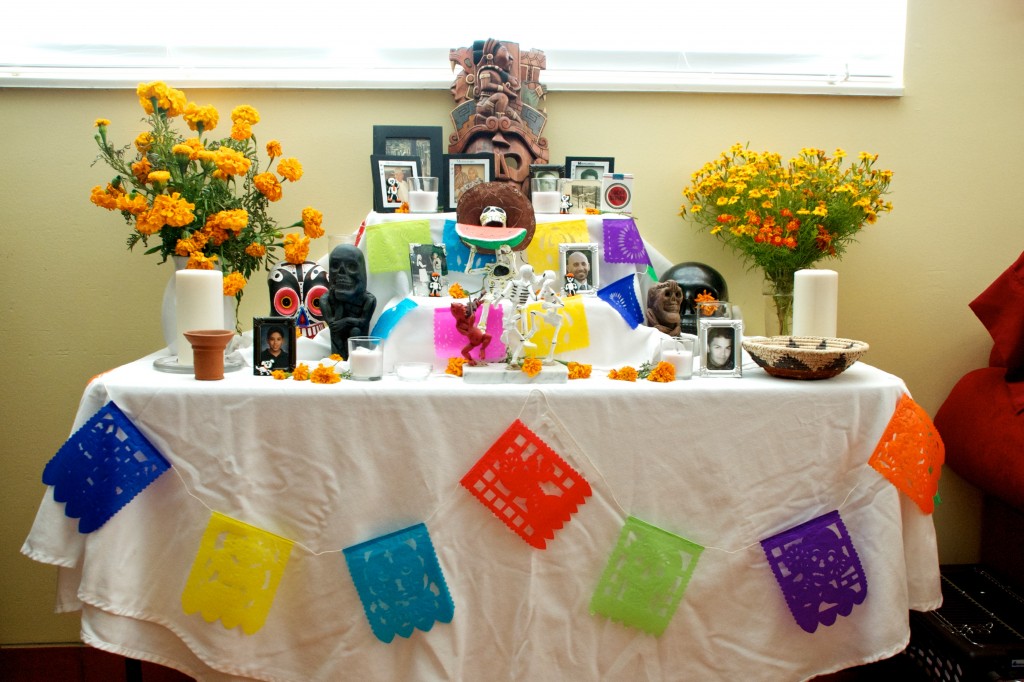
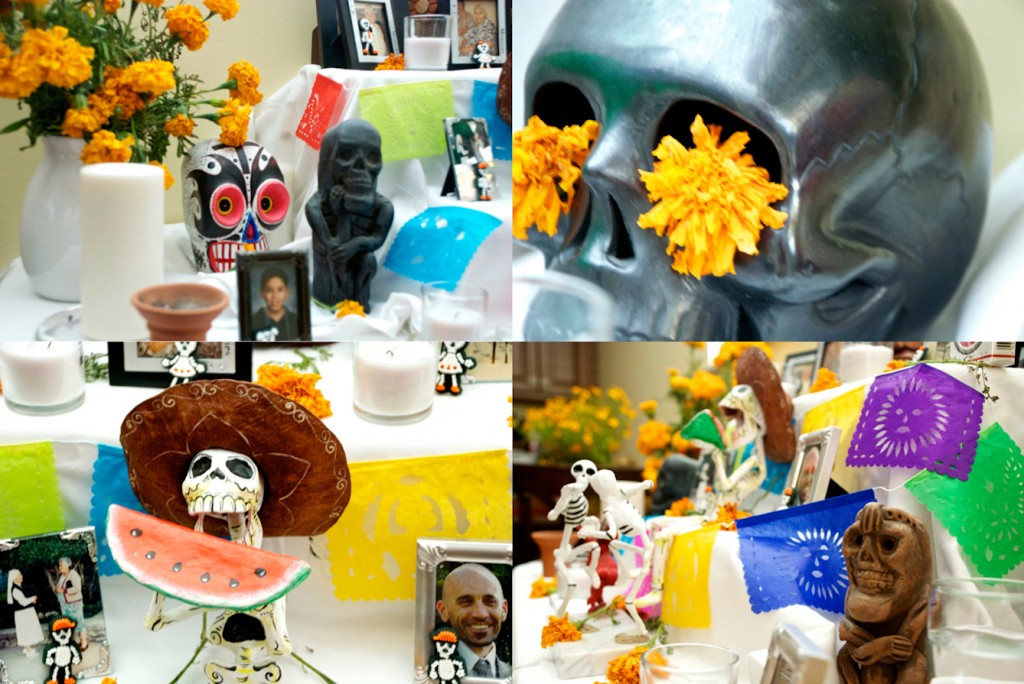
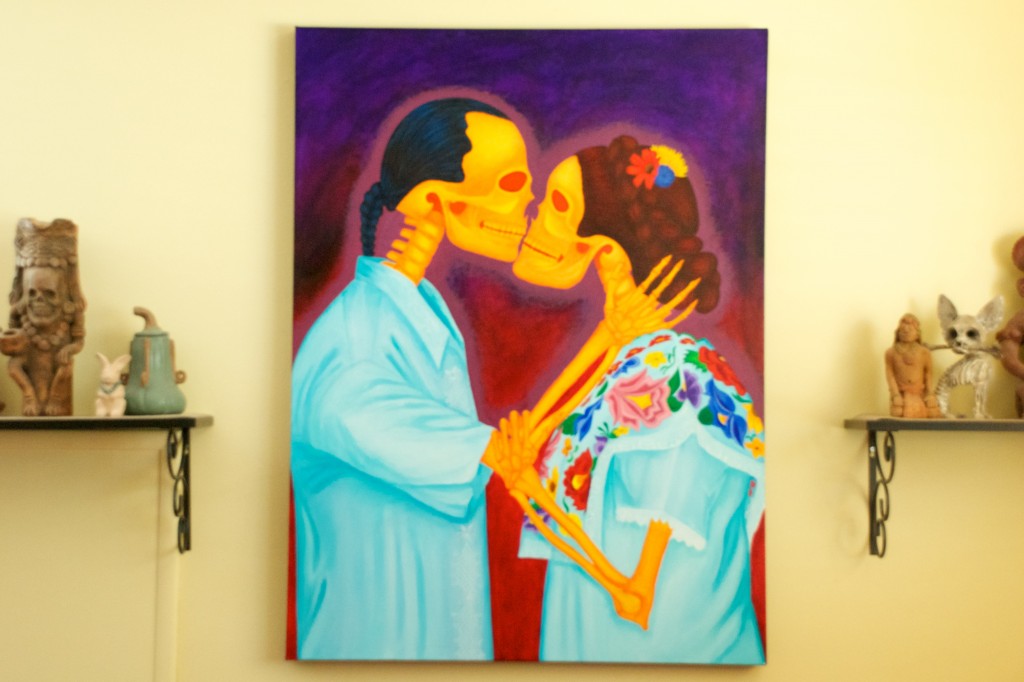
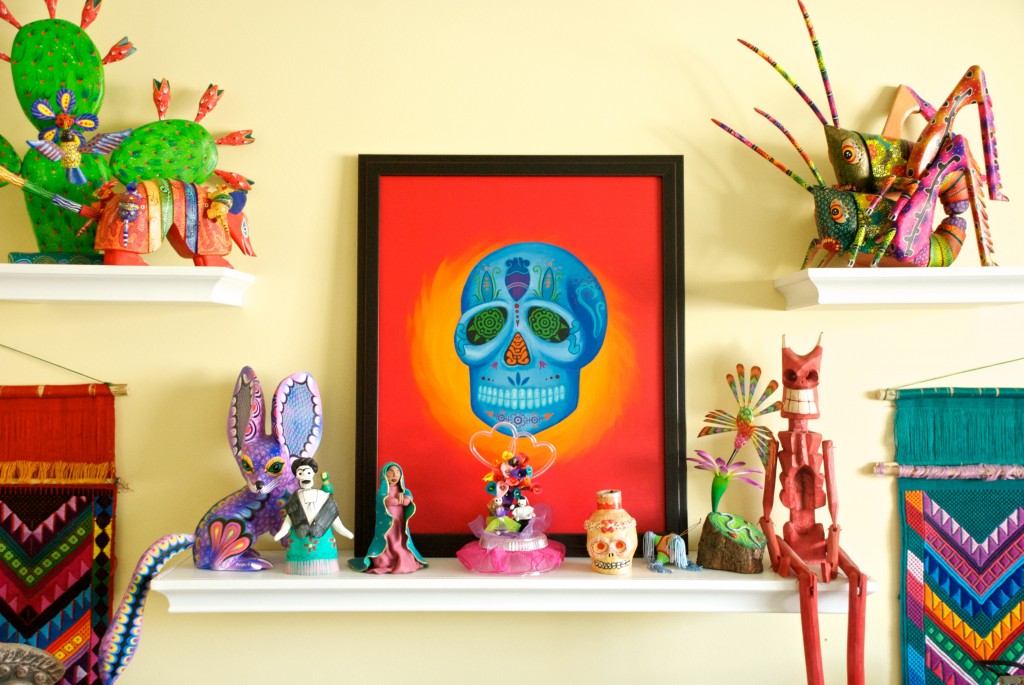
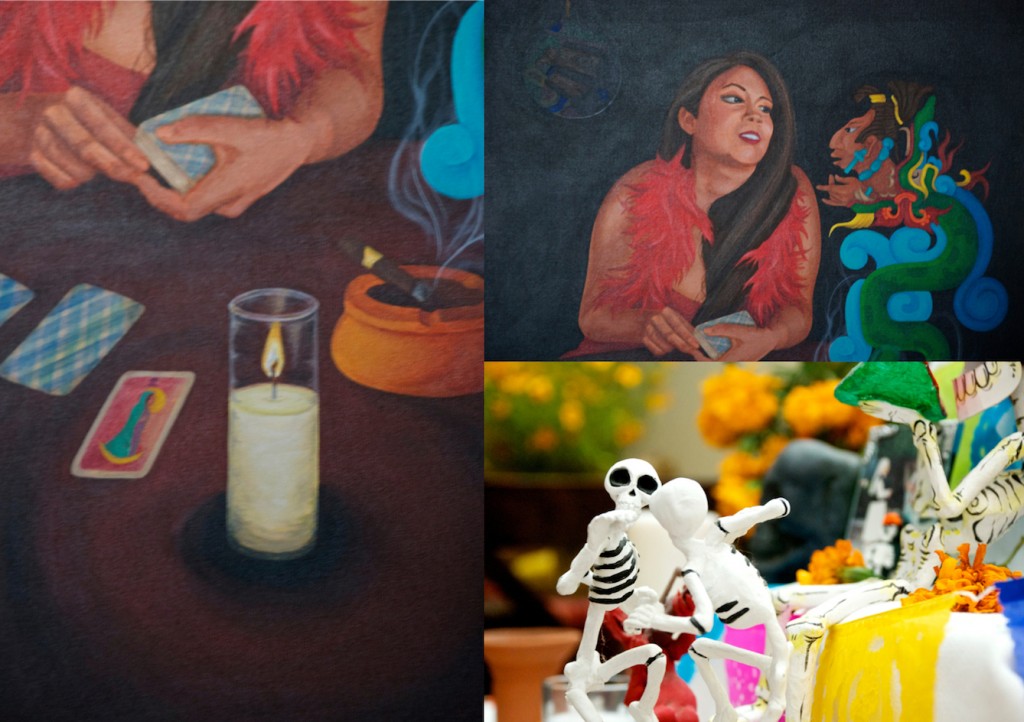 “I’m always proud to tell people I’ve participated in Craft Lake City’s DIY festival since it began five years ago,” she says. She sees the festival as a venue through which all forms of creativity can be shared and integrated into the spirit of our community. Veronica says, “DIY culture puts creativity and power back in the people’s hands. You can help the environment, you can build community, you can promote healthier ways of living – the list goes on and on.” Her definition of do-it-yourself extends well beyond crafts. Her partner brews his own beer, she creates her own body scrubs and cleaning products, and together they garden. She believes that functional crafts hold a special kind of beauty. “It’s beautiful because you’re investing yourself into the creation. You’re making it your own. Art is empowering. DIY culture is empowering. An organization that promotes those things only helps Utah grow for the better,” she says.This passion for community manifests in a number of public murals throughout the West Side of Downtown. Most notable is the Jackson/Euclid Trax station. Working closely with artist Ruby Chacon and the Mestizo Arts and Activism Collective, Veronica contributed to a mural titled, Communidades en Solidaridad: A collective transformative vision (2012). She used the opportunity to revisit common themes of her work, namely education and the central role of women in our society. “I love my community. I think that as much as we take, we should give back,” Veronica says. “As much as I can I try to give back to the people that support me and make me who I am. I always try to remember my roots.”
“I’m always proud to tell people I’ve participated in Craft Lake City’s DIY festival since it began five years ago,” she says. She sees the festival as a venue through which all forms of creativity can be shared and integrated into the spirit of our community. Veronica says, “DIY culture puts creativity and power back in the people’s hands. You can help the environment, you can build community, you can promote healthier ways of living – the list goes on and on.” Her definition of do-it-yourself extends well beyond crafts. Her partner brews his own beer, she creates her own body scrubs and cleaning products, and together they garden. She believes that functional crafts hold a special kind of beauty. “It’s beautiful because you’re investing yourself into the creation. You’re making it your own. Art is empowering. DIY culture is empowering. An organization that promotes those things only helps Utah grow for the better,” she says.This passion for community manifests in a number of public murals throughout the West Side of Downtown. Most notable is the Jackson/Euclid Trax station. Working closely with artist Ruby Chacon and the Mestizo Arts and Activism Collective, Veronica contributed to a mural titled, Communidades en Solidaridad: A collective transformative vision (2012). She used the opportunity to revisit common themes of her work, namely education and the central role of women in our society. “I love my community. I think that as much as we take, we should give back,” Veronica says. “As much as I can I try to give back to the people that support me and make me who I am. I always try to remember my roots.”



 “Don’t be worried about what everyone else is doing or what everyone else wants you to do,” Veronica tells aspiring creatives. “Everyone is an artist. Be original, be you, and create what your heart tells you to.” Years ago Veronica’s heart told her quit her job as an accountant in the private sector. This was a particularly weighty decision because Veronica was the first person in her family to graduate college. She had an MBA and a secure future, but she was also miserable. “I took my paper, pencil, canvas and paintbrush, and I took my life back,” she says. The first acrylic painting she ever completed was inspired by her travels in Mexico. Veronica is both Spanish and indigenous, a dichotomy with which she wanted to grapple and attempt to understand. She visited a place sacred to her indigenous culture, but that Spanish Catholics have long since conquered and re-built. Stories are told of an indigenous peasant who saw the Virgin of Guadalupe on this hill, in the spot Veronica stood. She decided she did not want to portray this woman as a demure virgin of Catholicism, instead she painted her as Tonantzin, the Aztec goddess of fertility worshipped by indigenous people. On Tonantzin’s purple robe she painted iconic feminine images of shells, the moon, flowers, and a glyph of a women giving birth. She stands on a serpent, another symbol of fertility. With her paintbrush in hand, she not only took her life back, she took back the divine feminine from a patriarchy that finds that power threatening. “As humans, we have a natural desire to be creative,” Veronica says.“The worst and saddest thing you can do for humanity is to suppress that desire. It’s never too late to change your mind and follow your dreams.”
“Don’t be worried about what everyone else is doing or what everyone else wants you to do,” Veronica tells aspiring creatives. “Everyone is an artist. Be original, be you, and create what your heart tells you to.” Years ago Veronica’s heart told her quit her job as an accountant in the private sector. This was a particularly weighty decision because Veronica was the first person in her family to graduate college. She had an MBA and a secure future, but she was also miserable. “I took my paper, pencil, canvas and paintbrush, and I took my life back,” she says. The first acrylic painting she ever completed was inspired by her travels in Mexico. Veronica is both Spanish and indigenous, a dichotomy with which she wanted to grapple and attempt to understand. She visited a place sacred to her indigenous culture, but that Spanish Catholics have long since conquered and re-built. Stories are told of an indigenous peasant who saw the Virgin of Guadalupe on this hill, in the spot Veronica stood. She decided she did not want to portray this woman as a demure virgin of Catholicism, instead she painted her as Tonantzin, the Aztec goddess of fertility worshipped by indigenous people. On Tonantzin’s purple robe she painted iconic feminine images of shells, the moon, flowers, and a glyph of a women giving birth. She stands on a serpent, another symbol of fertility. With her paintbrush in hand, she not only took her life back, she took back the divine feminine from a patriarchy that finds that power threatening. “As humans, we have a natural desire to be creative,” Veronica says.“The worst and saddest thing you can do for humanity is to suppress that desire. It’s never too late to change your mind and follow your dreams.”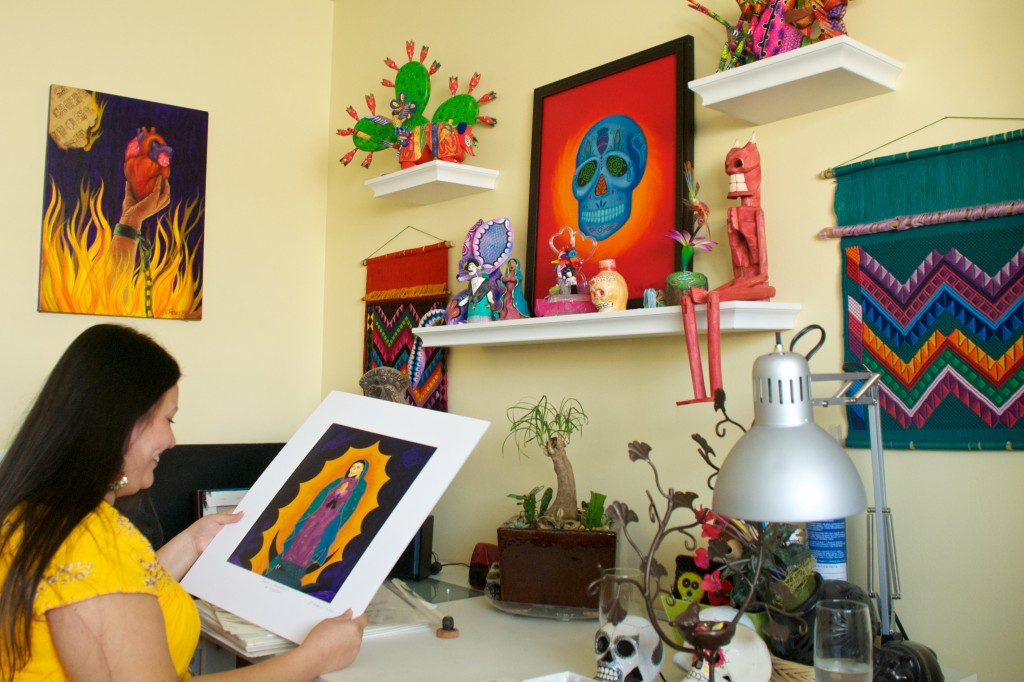
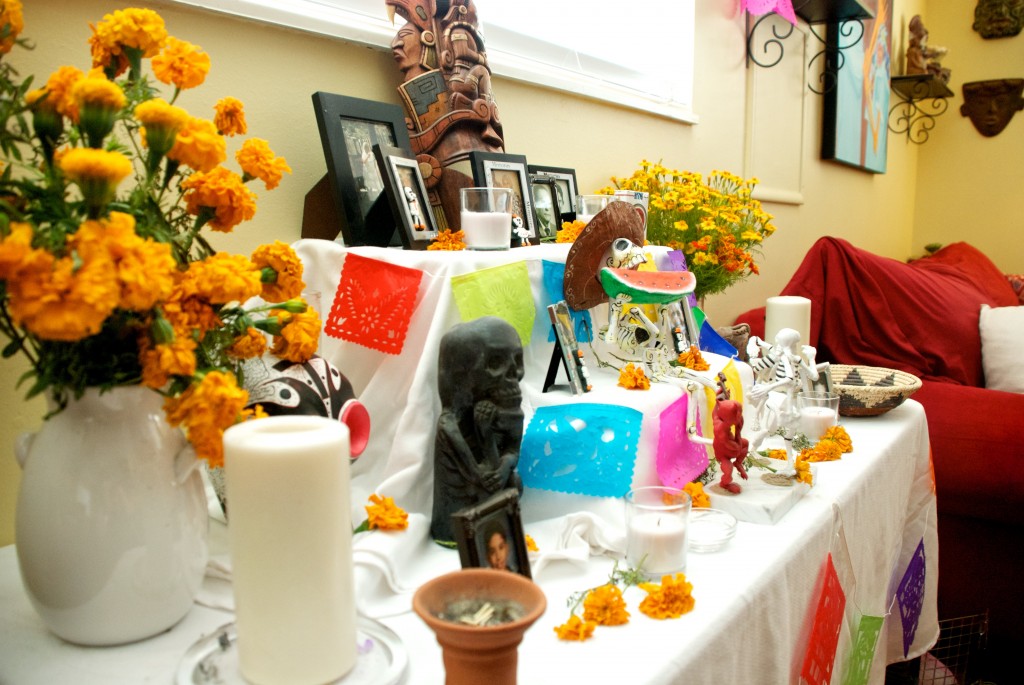

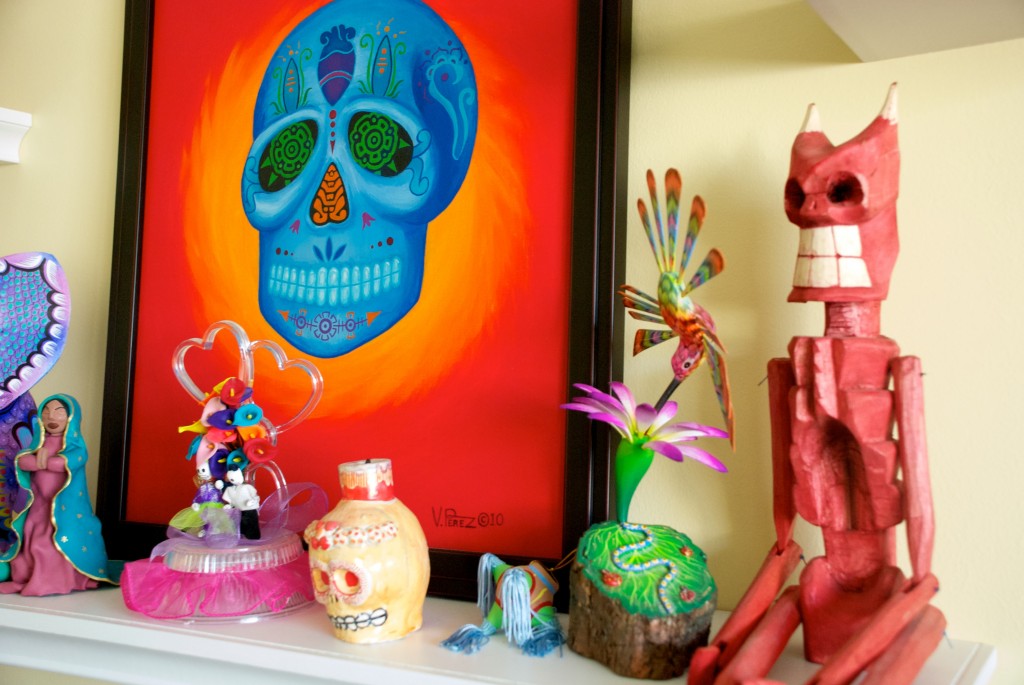

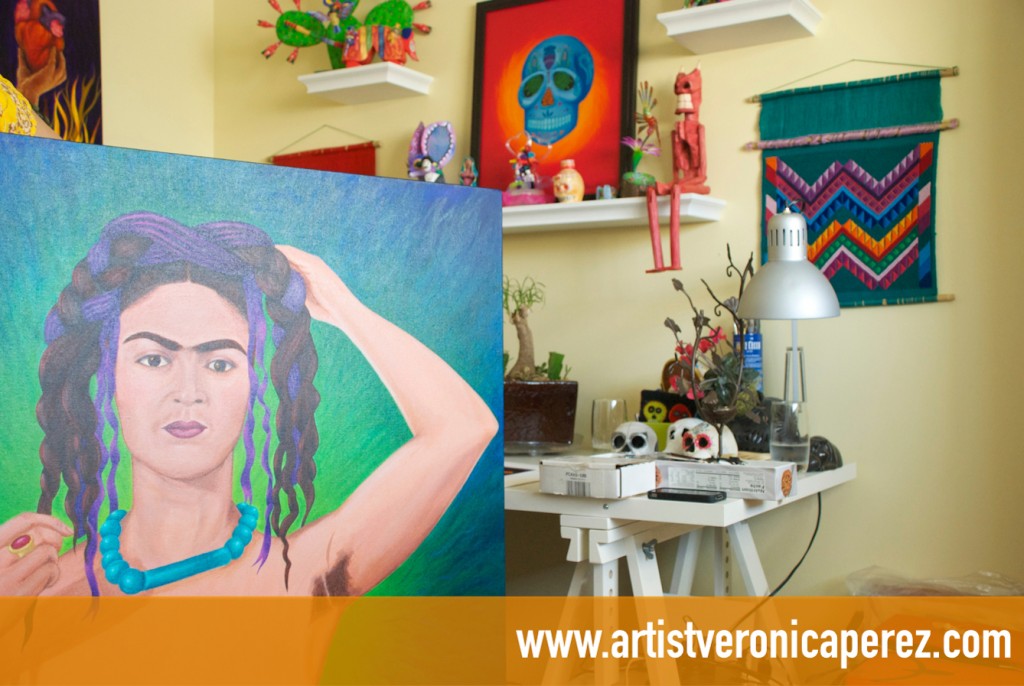
Visit Veronica’s website or follow her on Facebook and Instagram. You can purchase her work in her Etsy shop. Article and photos by Contributing Blogger Gail Jessen, found online at ASeriesOfAdventures.com + Instagram